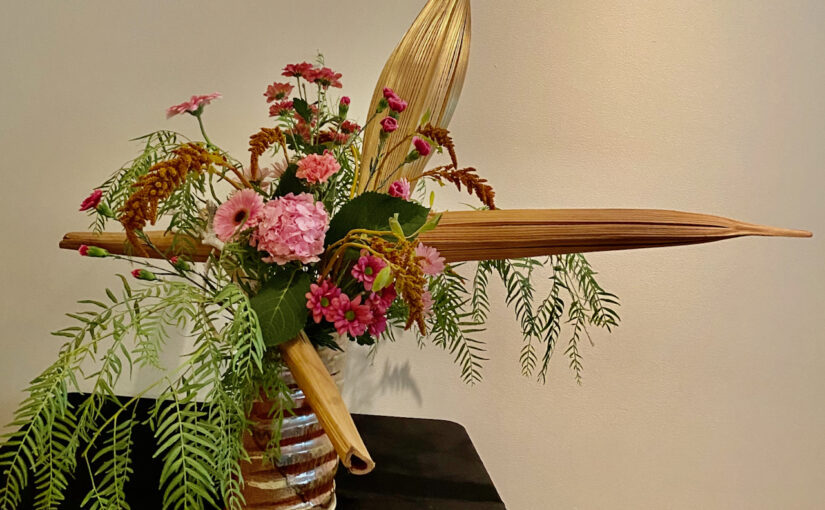Day 24 of 30-Day Writing Challenge
Lessons I learned in ikebana (Japanese flower arrangement):
- Less is more.
- Symmetry is boring. Make asymmetry, and can you still make it beautiful?
- No two arrangements are the same, even if you use the same materials and the same container.
- Ikebana is to give a new life to flowers, with your own creativity and imagination.
- Three basic elements of ikebana: line, Mass, Color.
- Three basic techniques of ikebana: cut, bend, fix.
- The canvas of ikebana is three dimensional.
- Only one branch can express so many things – direction, movement, and energy flow.
- Ikebana reminds you of geometry class in high school: With two lines you make surface. With three lines you create depth.
- High contrast of colors, strong statement. Similar colors, harmony.
- Always consider the surroundings where you place your arrangement.
- All the flowers are beautiful, but not all the ikebana arrangements are beautiful.
- Always keep the workspace clean. Not only the final work but the process is also important.
- Always wipe out your scissors to avoid rust.
- Ikebana and calligraphy have similarity. Ikebana and music have common factors.
- We cut branches from nature and create what didn’t exist in nature before.
- You are not taking out. You are creating space.
- Space between branches and flowers are not vain, but a very important element.
- Don’t hesitate to use many materials. Don’t waste any material.
- Look closer. What do you see? Look back. What do you see?
- Every material has the front and back. Why? Because they grow under the sun light.
- You can only learn how flexible the branch is by actually touching and trying to bend it.
- You can’t float the branch. We are living in the world with gravity.
- You can’t take away colors from the materials. Use them.
- Scissors are a cutting tool, not a tool for putting together. When in doubt, leave the branch longer. You can always cut, but once cut short you can never make it longer.
- With only three branches you can create a basic structure of the arrangement.
- You always want a focal point.
- When arranging with many different kinds of flowers, try to place the darkest color in the center to keep the overall harmony.
- Shorter flowers in the back to add depth.
- Always keep in mind from which direction you see the arrangement. Are you placing it against the wall? Above the eyesight? On the floor so that people will look down upon?
- Always cut flower stems under water it will last longer.
Maybe that’s all I’ve learned in ikebana and also that’s all I teach my ikebana students.
You can read through the list less than three minutes, but it takes more than lifetime to perfect it. That’s the beauty of learning.
